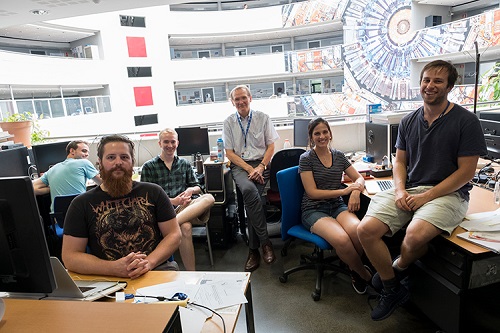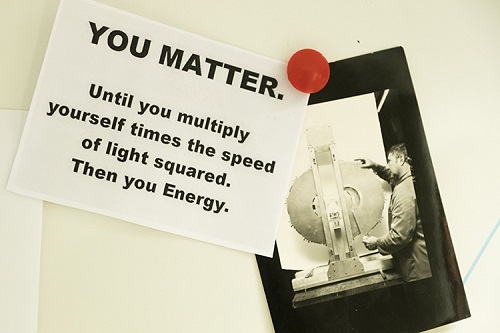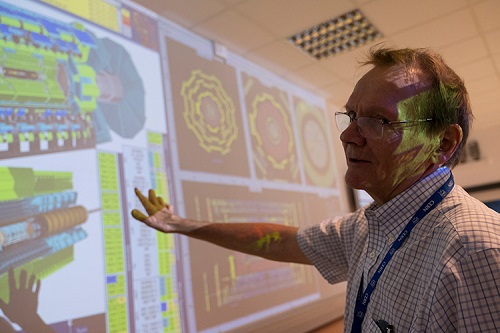Working on a small piece of the world’s largest experiment, it’s easy to lose sight of the big picture.
Kyle Cormier, a University of Toronto grad student in particle physics, is a member of U of T’s research group at CERN, the sprawling international lab on the French-Swiss border that is home to the largest particle accelerator, the Large Hadron Collider.
His job? Researching a silicon microchip for a planned upgrade to the 7,000-tonne Atlas detector, one of four major experiments at the LHC. He has designed, tested and redesigned the chip to withstand extreme cold and radiation exposure – all so that it can read data from proton collisions without needing a tune-up for at least a decade.
It may not sound glamorous, but it’s the type of precise, exacting work that led CERN researchers to the 2012 discovery of the Higgs boson, a particle that had been theorized in the 1960s.
“If you’re on a big hike up a mountain, you’re stepping over root branches working your way up,” Cormier says.

At first glance, CERN, a collection of low-slung concrete buildings on the outskirts of Geneva, doesn’t look like a state-of-the-art, multibillion-dollar research facility. But deep underground, the accelerator races protons around a 27-kilometre ring until they are travelling nearly the speed of light and then smashes them together. Like crash scene investigators looking for clues in rubble, scientists analyze the debris from the collisions, which send subatomic particles flying in every direction.
CERN scientists used this method to detect the Higgs boson in 2012, a particle explaining why others have mass. Now they’re digging even deeper, investigating questions such as the nature of dark matter.
The mysterious type of matter, which makes up more than a quarter of the universe, has puzzled scientists since the first clues about its existence arose in the 1930s through astronomical observation and calculations.
“We’re at the point where we’ve looked where the light’s brightest,” says Pekka Sinervo, a professor of experimental high energy physics at U of T. “Now we’re looking in all the dark corners that are hard to investigate.”

Researchers may still be a long way off from answering the dark matter riddle, but some breakthrough is just a matter of time, says Laurelle Veloce, who is also studying particle physics at U of T and working at CERN.
“You just put one foot in front of the other and eventually you know someone will find something,” she says.
The U of T research group is the largest Canadian team working on the Atlas experiment, with 17 graduate students, four postdocs and six faculty members. Over the summer, undergraduate students can take a summer course at CERN.
Olivier Arnaez, now a U of T postdoc, spent years searching for the Higgs. When CERN researchers had gathered enough statistical evidence to confirm the discovery of a new particle, there was no eureka moment, he recalls – just relief.
“We were happy because we knew we could sleep soon,” he says, “which didn’t happen because we then had to investigate more properties of the Higgs.” The celebrations involved litres of champagne and Nobel prizes for the theorists who proposed the Higgs mechanism decades earlier.

Years of research at CERN haven’t been without setbacks, however. Only nine days after the first successful beam tests in 2008, a soldering error caused an accident that put the project behind schedule by more than 18 months. And last year, researchers who thought they had discovered another new particle admitted they had misinterpreted the data.
But researchers are still hopeful and morale remains high, says Sinervo.
“We’re trying to do things every day that nobody has ever done before,” he says.
Engineering a microchip to work for 10 years without the need for repair, as his student Cormier is doing, is no small feat, he adds. “That’s like how you build spaceships for a moonshot.
“We know that there is going to be some discovery over the horizon,” Sinervo says. “How far do we have to go to reach it? That’s something we don’t know.”

